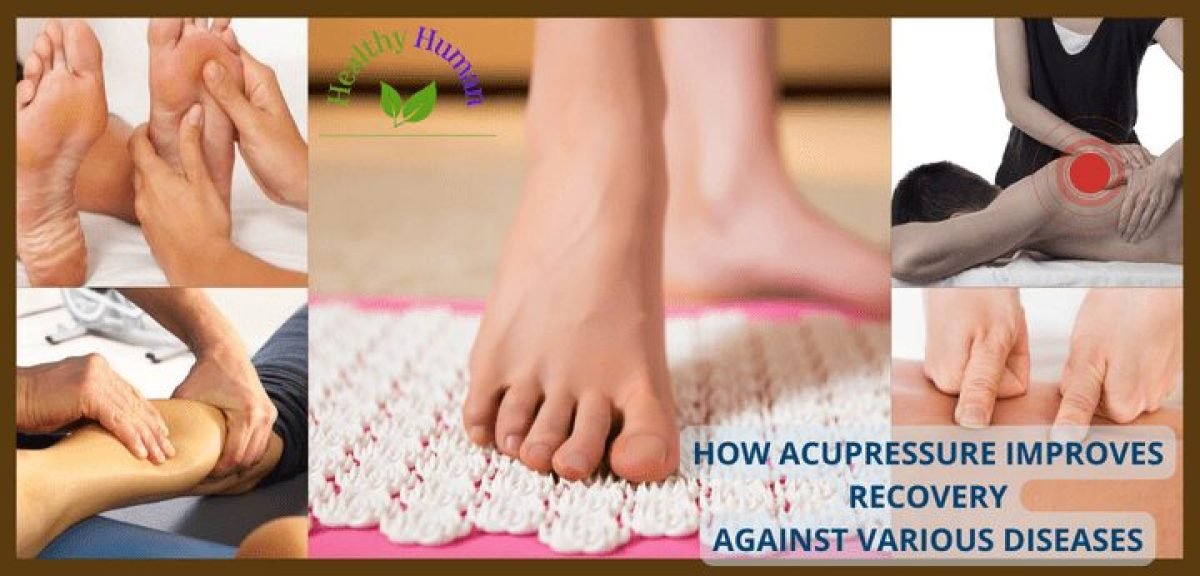Acupressure is a method used in traditional Chinese medicine (TCM) to alleviate obstructed qi by applying pressure manually to certain body locations. It is comparable to acupuncture. Fingertip is an alternative to needles.
Acupressure is said to improve energy flow and treat a number of ailments, including motion sickness, migraines, and muscle discomfort. This article examines acupressure, its applications, and the supporting data.
Theory behind Acupressure
One of the many Asian bodywork therapies (ABT) with roots in traditional Chinese medicine is acupressure (TCM). Medical qigong and Tuina are two examples of additional Asian bodywork therapies. Shiatsu is the name for Japanese acupressure.
According to traditional Chinese medical philosophy, your body’s meridians or channels include certain acupoints, also known as acupressure points. The acupoints and energy meridians that acupuncture uses as targets are the same. However, It is thought that qi (ch’i), or life power, travels along these invisible channels.
According to traditional Chinese medicine, your body’s 12 primary meridians connect specific organs or networks of organs, creating a system of communication. Your fingertips are the starting point for the meridians, which connect to your brain before reaching an organ that corresponds to a particular meridian.
The sickness, according to this theory, might occur when one of these meridians is blocked or out of balance. Acupressure and acupuncture are two TCM practices that are meant to assist in re-establishing equilibrium.
How Acupressure work
Acupressure practitioners apply pressure to acupoints on the body’s meridians using their fingers, palms, elbows, or feet as well as special instruments. Acupressure and other modalities are used for stretching and acupressure massage.
You lay completely clothed on a plush massage table for acupressure treatment. Moreover, Your body’s acupressure spots are gently pressed by the practitioner. Moreover, an average session lasts about an hour. For the best results, you might require many sessions.
Acupressure and other Asian bodywork techniques aim to balance the opposing forces of yin (negative energy) and yang (positive energy) and restore health to the body’s energy pathways (positive energy). Moreover, acupressure’s supporters assert that it also treats the mind, emotions, and spirit in addition to the body’s energy fields and physical structure. Some people even think that therapists have the ability to transfer external qi, or life energy, to another person.
Some Western practitioners do not think that these meridians even exist, let alone that this is conceivable. They place the blame for any outcomes instead on other elements, such as lessened muscle tension, increased circulation, or stimulation of endorphins, which are endogenous painkillers.
Common Acupuncture Points
Too many to list, the body has literally hundreds of acupuncture sites. Here are three that acupuncturists and acupressure specialists frequently employ:
- The large intestine number four is between your thumb and forefinger (LI 4).
- On the top of your foot, between your big toe and the next toe, is where the third liver (LR-3) is located.
- Approximately three finger widths above your inner ankle bone is the spleen number six (SP-6).
Also Read:- Harmful Food Chemicals Affect Human Lives
Health Problems Benefit
Research into the health benefits is in its infancy. Many patient reports support its use for a number of health concerns. Well-designed research is needed, though. Moreover, Here are a few health problems that appear to improve:
- Many research backs up the use of wrist acupressure for treating and preventing nausea and vomiting.
- Helps in recovery after surgery
- During spinal anesthesia
- After chemotherapy
- From motion sickness
- Related to pregnancy
Between the two wide tendons that start at the base of the palm, the PC 6 acupressure point is located on the inside of the wrist. Although special wristbands are available for purchase over the counter. Moreover, They apply pressure to comparable pressure sites and, for some, are effective.
Diseases that can be treated by acupressure
There are numerous diseases that can be treated with the help of acupressure. Some of them are mentioned below.
Cancer
Individual accounts suggest that acupressure also aids in easing various symptoms of cancer or its therapies, in addition to easing nausea immediately following chemotherapy. These findings include stress reduction, increased energy levels, pain relief, and tension relief. An additional study is required to verify these reports.
Pain
According to some preliminary research, this may be able to relieve headaches, postoperative pain, and low back discomfort. Other types of pain might also see benefits. The LI-4 pressure points are occasionally used to treat headaches.
Arthritis
According to certain research, acupressure reduces inflammation and produces endorphins. However, which may be beneficial for some types of arthritis.
Depression and anxiety
Numerous studies indicate that using this may help with fatigue and mood issues. However, To be certain, trials need to be well constructed.
Precautions with Acupressure
Acupressure is extremely safe in general. Before attempting any therapy that involves manipulating joints and muscles, consult your doctor if you have cancer, arthritis, heart disease, or another chronic condition.
The following situations exist:
1. Malignant growth is present or the disease has migrated to the bones.
2. Bone disease, spinal damage, or rheumatoid arthritis aggravated by physical manipulation.
3. You have venous thrombosis.
4. You are expecting (because certain points may induce contractions)




